10 Ideas to Celebrate Labor Day

By Sarah Hunt, AZFB Communications Intern
Photo by user: Free-Photos on Pixabay
Labor Day weekend is coming up! I am always stumped what to do to celebrate if I wait until the last minute to plan our celebration, so I did some research and came up with 10 awesome ideas that you, your friends, and your family will have a blast doing. But first, here is some history on why we celebrate this holiday.
What is Labor Day?
This Fill Your Plate article describes Labor Day perfectly: In the United States, Labor Day is a holiday celebrated on the first Monday in September. This year that is September 7th. It is a celebration of the American labor movement and is dedicated to the social and economic achievements of workers. It constitutes a yearly national tribute to the contributions workers have made to the strength, prosperity, and well-being of their country.
That’s YOU! We are grateful for all workers this Labor Day, for jobs that boost our economy, and jobs that provide for our families. The work force plays an important role in our country, especially through this pandemic and time of economic uncertainty. If you lost your job due to the effects of COVID-19, we want to see you back on your feet as soon as possible. Go to KTAR News website to search their database of job opportunities in Arizona. If your business is hiring, you can also enter information into the database about your open positions to help your fellow workers.
10 Fun Labor Day Activities
- Have a barbeque: This is the perfect time of year for grilling. Try a new recipe from Fill Your Plate for grilled salmon, chicken, steak, or kabobs. For barbeque tips from the Arizona Beef Council, read this Fill Your Plate article.
- Invite friends and family over: It isn’t a party without people to celebrate with! Make sure to limit your party to the number recommended by the CDC guidelines. But a small gathering doesn’t mean you have to limit the fun! All of these activities listed can be done with any number of people.
- Bake treats/make drinks: Labor Day is often the last hoorah for summer. Fall will be here before you know it! Some of my favorite summer treats are warm desserts with ice cream, like brownies, pies, pazookies, and cobblers. I also enjoy non-alcoholic pina coladas, a family friendly option for everyone. A few years ago we discovered this tool on Amazon that removes the fruit out of the pineapple, so you can blend it into a drink and pour it back into your pineapple cup! See the recipe with options for variations here.
- Set up outdoor games: Build a fort, play cornhole, do some outdoor bowling, throw horseshoes, play ladder toss, and more. Make it a competition and give prizes, little plastic trophies filled with candy, or goody bags for the winners and runner-up’s to add to the fun.
- Watch a movie outside: Hang a white sheet on your fence, clothesline, or between two trees, and use a projector connecting to your smartphone or laptop to bring the movie theater magic to your backyard. Search for projectors on Amazon; you can find some for under $50. And what’s a good movie without popcorn, snacks and candy? Try adding junior mints, mini peanut butter cups, or a chocolate drizzle to your popcorn to add variety and get two movie snacks in one.
- Do a fireworks show: Do you have some leftover sparklers and fireworks from the 4th of July? Now is a great time to use them! You can also shop for new ones for your celebration, although they can be harder to find out of season. Have your guests bring blankets to sit on to enjoy the show from the lawn. Don’t forget to follow Arizona’s laws about fireworks, found here.
- Take a nap: You’ve been working hard all year. You deserve some good rest for all you do! Try using a sleeping mask to block out light from windows. Find a quiet spot in your house to take a nap. Consider sending your kids to a family member’s house for a few hours so you can get in some me time.
- Play in the water: Go swimming in your pool, a local pool or a lake. if you don’t have a pool, get a slip and slide, fill up some water balloons, or play in the sprinklers. Younger kids especially love water games like these.
- Take a road trip in Arizona: Get away from the city and drive to Sedona, Flagstaff, Payson, or another town for a mini vacation. Shop for groceries there and have your own barbeque up there! Find a pool in town, or a lake or swimming hole in the national parks close by that you can swim in.
- Make decorations/decorate your house: Make a quick trip to the Dollar Store or the dollar section at Target to find some patriotic decorations and craft supplies. Kids will love helping to make the decorations and hanging them up around the house. Find ideas by searching Pinterest pages such as this one.
Find holiday inspiration for other holidays as well by searching Fill Your Plate’s blog!
How To Protect Our Children From Childhood Obesity
By Kenda Hettinger a recent ASU Nutrition Student
Why should we be concerned?
We recently got some sad news regarding childhood obesity, it’s has not gotten much better over the last few years. The national obesity rate for children age 10-17 is 15.3%, compared to 16.1% in 2016. Another way to look at this, 4.8 million kids in the United States are obese. Arizona is below the national average, at 13.2%.
Obesity can lead to type 2 diabetes, high blood pressure, coronary artery disease, certain types of cancer, sleep apnea, fatty liver disease, osteoarthritis, and many more complications. Controlling our weight is so much more than how we look and fit in our clothes. Our weight affects how our bodies operate and grow.
How do we protect our kids?
- Education – Start by educating your children on why we eat. We consume food to fuel our bodies. In my home, we eat dinner together and we often go over the benefits of what we are eating. My five year old will tell you that nuts help your brain, vegetables help prevent illness, and water is the most important thing you put in your mouth. It helps when our kids understand that our foods have very important roles in our bodies.
- Exercise – Make it a family affair. There are great kids yoga and exercise videos available for free on YouTube. Buy a ball and go outside to kick it around while you grill some non-processed meats and veggies. Pack up dinner and take it to a park to play and picnic.
- Diet – The best change most anyone can make is to take the refined sugars out of the diet. Candy, desserts, sodas, sweetened teas, and juices should all be limited to special occasions only. Focus on vegetables because they have the most nutrients for the least amount of calories. When losing weight specifically, vegetables should make up the largest portion of your plate.
Below is a great illustration from Harvard Chan’s school of public health on how a kid’s plate should be structured.
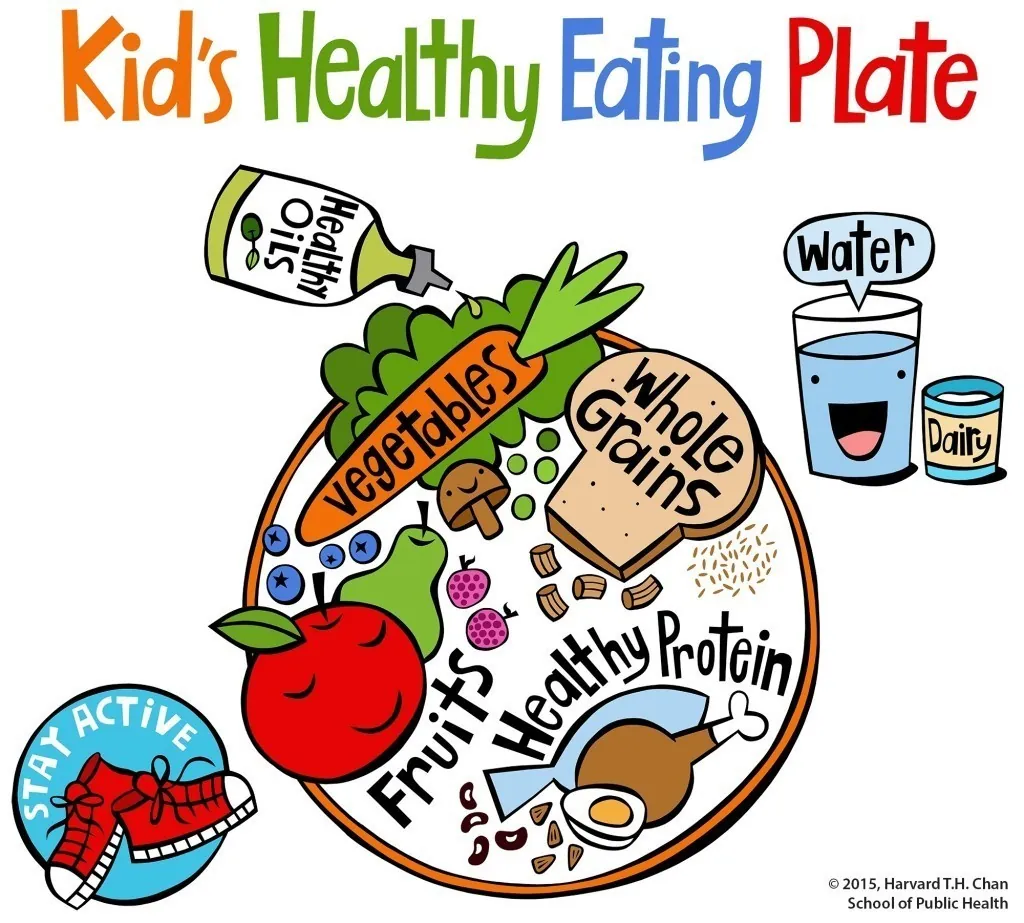
Fill your plate has many wonderful resources for a healthy lifestyle. Check out the recipe section or the produce in season tab for more information
Resources
https://stateofchildhoodobesity.org/children1017/
https://www.niddk.nih.gov/health-information/weight-management/health-risks-overweight#problems
Dates
By Kenda Hettinger a recent ASU Nutrition student
Dates have grown in popularity as the whole food diet has grown in popularity. Dates are a good whole food sweetener. People add dates to their smoothies and desserts, I have even seen it added as a sweetener in barbeque sauce. Dates are in season in the southern part of Arizona June through November.
History of Dates
There are thousands of different species of dates, but the most commonly grown in the US are deglet noor and Medjool. They grow on palm trees and are best grown in hot and arid conditions. This is why they are grown in southern Arizona and California. Dates originated from somewhere around northern Africa, the Middle East, and South Asia. They are a staple in the middle eastern diet. Dates were brought to the United States in the early 20th century by and agricultural explorer, Walter Swingle. Although the Middle East and Africa are still the largest producers of dates, American producers grown around 33,000 tons of dates per year.
Nutritional Information
One hundred grams (about 9) of dates contains 300 calories, 2.5 g protein, 75 g carbohydrates, 7.5 g fiber, vitamins, minerals, antioxidants, and polyphenols. Antioxidants and polyphenols are both prebiotics, which is crucial for gut health. According to the study, Impact of palm date consumption on microbiota growth and large intestinal health: a randomised, controlled, cross-over, human intervention study, the consumption of dates significantly increases bowel movements, reduces stool ammonia concentration, and reduced genotoxicity in human fecal water. This data suggests that dates may help to inhibit the growth of colon cancer cells. They are also thought to promote relaxation and reduce pain during labor. So ladies, grab yourself some local dates.
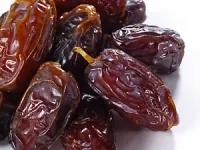
Resources
Eid, N., Osmanova, H., Natchez, C., Walton, G., Costabile, A., Gibson, G., Spencer, J. (2015). Impact of palm date consumption on microbiota growth and large intestinal health: A randomized, controlled, cross-over, human intervention study. 114(8), 1226-1236.
https://en.wikipedia.org/wiki/Date_palm#History
https://www.npr.org/sections/thesalt/2014/06/10/320346869https://nutritionfacts.org/video/benefit-of-dates-for-colon-health/?gclid=Cj0KCQjw6eTtBRDdARIsANZWjYa_qgnBD3j47wTov66nXyCUrjPtczmaDcxHLOwOyGuViWcHjfgTut4aAjfdEALw_wcB/forbidding-fruit-how-america-got-turned-on-to-the-date
https://fdc.nal.usda.gov/fdc-app.html#/food-details/438221/nutrients
Summer is here! How to Make your Grill Outs a Little Healthier
By Vanessa Evans a Recent ASU Nutrition Student
It’s that time of year again. It’s warm and sunny, but not too hot. It’s perfect weather for grabbing your family and friends and grilling out by the pool or the lake. While hotdogs and hamburgers will always be staples, try one of these ideas for something a little different and maybe even a little healthier.
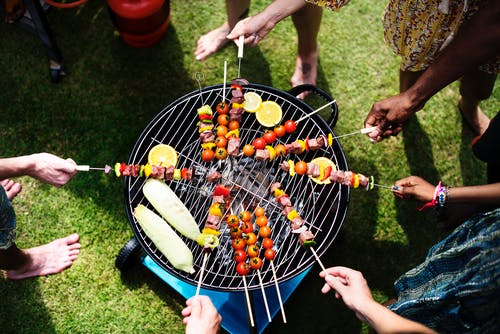
Main Course:
Try grilling some shrimp, salmon burgers, or salmon (or other fish) fillets. Fish cooks pretty quickly and is easy to season or marinade ahead of time and it is a healthy alternative to when your hotdog and “hamburgered” out. Another great option is chicken. Whether you grill your wings, breasts, and thighs, or venture into a chicken burger, chicken is a tasty low-fat alternative to the traditional options. Season with jerk seasoning or a barbeque sauce and you’re in business. Finally, there are numerous lean cuts of beef one of the few meat proteins that can provide healthy protein, iron, and zinc along with several essential minerals in just three ounces.
Sides:
This is where I want to encourage you to get creative! There are so many options here! Try this recipe for a healthier version of deviled eggs featuring the ever-popular avocado (https://www.chefdehome.com/recipes/747/healthy-deviled-eggs-with-avocado). Or try using shaved brussels sprouts in your coleslaw in addition to your cabbage, or try grilling up vegetable skewers. Or you could even try this recipe for summer salad of corn, tomato, and avocado (https://www.fitnessmagazine.com/recipe/tomato-corn-and-avocado-salad-with-spicy-vinaigrette/). Your possibilities here are endless! You don’t have to just grab 3 bags of chips and premade potato salad. You can do this!
Dessert:
You can really have fun with this category too. Try grilling some fruits. Have you ever tried grilled peaches with cinnamon sugar or ice cream? It is to “die”for. I promise. Grilled watermelon is another amazing option, as well as pineapple and pears. Snow cones are another great option here. Try this recipe for Mango Strawberry snow cones featuring fresh fruit (https://www.foodnetwork.com/recipes/tyler-florence/mango-strawberry-snow-cones-recipe-1942260).
Drinks:
I know it’s hard to make alcohol healthier, but I do have some ideas for you. My favorite tip is mixing vodka and flavored seltzer water like LaCroix, but for those of you who love a good cocktail, I have some ideas for you. Sangria is always a crowd pleaser but is infamous for having so much sugar in it! Try this white wine recipe which features seltzer water, fresh fruit and homemade lavender simple syrup, which allows you to sweeten it just to your liking (https://www.howsweeteats.com/2018/05/lavender-white-wine-sangria/). Or try a wine spritzer, which is just your favorite white or rose wine cut with seltzer. Not a wine fan? That’s ok! Try this easy recipe for a mint julep that uses maple syrup as its sweetener (https://cookieandkate.com/maple-mint-julep-recipe). Looking for something non-alcoholic? Try this recipe for a strawberry-basil cooler (http://makingthymeforhealth.com/strawberry-basil-lime-coolers/).
Happy Grilling!
Looking for more articles to help boost your healthy living? Check out our Fill Your Plate Blog. Looking for some recipes that the whole family will enjoy? Check out the recipe section on our website.
References:
Best Foods for Fourth of July Grilling. (n.d.). Retrieved from https://www.eatright.org/food/nutrition/eating-as-a-family/best-foods-for-fourth-of-july-grilling
Editors, F. (2017, March 31). 10 Healthy Side Dishes to Bring to Your Next BBQ. Retrieved from https://www.fitnessmagazine.com/recipes/healthy-eating/healthy-side-dishes-bbq/?page=5
Food, T. (2018, July 03). Healthy BBQ Sides That Will Make You a Cookout Hero. Retrieved from https://www.thrillist.com/eat/nation/best-healthy-bbq-sides
Healthy Summer Desserts. (n.d.). Retrieved from https://www.foodnetwork.com/grilling/healthy/photos/healthy-summer-desserts
Landrum, S., & Landrum, S. (2018, June 23). 22 Healthy-ish Summer Cocktail Recipes to Beat the Heat. Retrieved from https://www.brit.co/healthy-drinks-low-calorie-cocktails-fruit-summer/
Riches, D. (2019, February 24). What Are Some Excellent Grilled Fruit Recipes? Retrieved from https://www.thespruceeats.com/top-grilled-fruit-recipes-334503
Team, T. C. (2017, May 22). 25 of Our Best Cookout Recipes. Retrieved from https://www.cleaneatingmag.com/recipes/25-cookout-recipes
Easter in Greece
By Kevann Jordan A Recent ASU Nutrition Student
In Greece, Easter is one of the most celebrated holidays. While we know it as the celebration of Christ’s resurrection, in Greece it is also the end of Lent and directly after the huge celebration of Apokreas. In Greece, many celebrations combine Eastern Orthodox celebrations with the traditional pagan Greek celebrations. Apokreas is in honor of the Greek god Dionysus, which is the god of rebirth.
Many desserts are served at this time including Koulourakia, which combines both the Orthodox Greek and the pagan beliefs. The cookies shaped into a hairpin twist, a wreath, or coiled. The wreath represents the wreath placed on Christ’s head during his crucifixion and the coil represents the snake which is worshipped for its healing powers.
This was the first time I had heard of these cookies, which was one of the reasons that I decided to try the recipe. The Greek desserts that I have tried in the past were always delicious, but, very different from anything I had ever eaten before. I was curious about the flavor and the texture of the cookie.
After reading a bit about the cookie and its meaning I really wanted to try the cookie as a treat and a learning experience for my family. It was fun to show different cultures and various ways of celebrating Easter. The cookies were so sweet and soft. The flavor was not what I expected, but they were a delicious surprise.
My family loved this recipe. My youngest took the sesame seeds off, to be expected (but worth the attempt). I did have them out cooling alongside baked penne, but they do have more of the appearance of bread than a cookie. I hope to find them at a traditional Greek bakery and compare them with one another. The recipe was very simple and easy to follow. The dough was very soft, which made it nice to work with. I think next time I will make use of smaller strands to make the twist or crown shape, but, overall I think the recipe is a hit. We will add them to the recipe file and have them at Easter time. This might become a new tradition for our household.
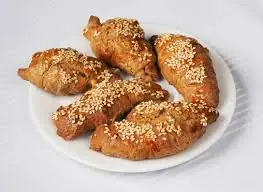
Koulourakia (Greek Easter Cookies)
1c butter
1½ c sugar
3 eggs
½ c orange juice
6c flour
½ tsp baking soda
2 tsp baking powder
1 egg beat w/milk
7 Tbs. milk
Sesame seeds
Cream butter. Add sugar gradually. Add eggs one at a time, alternating with orange juice. Add flour that is sifted with baking powder and baking soda, a little bit at a time. Should be a soft dough.
Shape a desired. Brush with egg-milk mixture and top with sesame seeds.
Bake on a greased cookie sheet at 375 to 400 degrees for 10 to 12 minutes.
For more fun recipes like this check out our recipe section. Check out the Fill Your Plate Blog for articles about healthy eating. Ever wonder what produce is in season? Check out the Arizona Produce in Season section.
How to Eat Healthy in an Airport Part II: Plan Ahead
By Erin Wyatt a Recent ASU Nutrition Student
The airport experience can occasionally be the worst part of traveling. Sometimes you are powerless when it comes to how and when you get to your destination. You are at the mercy of weather, layovers, and air traffic control. It would be nice to feel some sort of control over your travel plans. One way that this can be achieved is by packing healthy meals and snacks ahead of time, providing you with the tools to combat those tempting terminals. Killing time in an airport can wreak havoc on anyone’s well-intention of eating healthy. I am here to help by suggesting some important nutrients, sharing my personal go-to travel snacks, and providing an easy recipe that will make it through security.

Nutrients that Soar
When it comes to packing your snack bag, there are a few specific nutrients that you should consider to ensure healthy travel. First, and foremost, hydration while flying is very important. The air on a plane is quite low in humidity, resulting in scratchy throats and an increased risk of getting sick.1 So bring a refillable water bottle and drink plenty of water before, during, and after a flight. Second, be sure to pack snacks containing complex carbohydrates and protein. These nutrients will keep you fuller for longer periods of time.2 Some examples include whole fruits, granola, nuts, and cheese. Lastly, consider low-fat options that won’t weigh you down. Steer clear of greasy chips, fatty meats, and desserts that will make your flight even more uncomfortable than it already is.
Flying Friendly Foods
Not all foods travel well. Consider refrigeration, utensils, and odor when packing your plane picnic. If you bring foods that spoil quickly, then you have a shorter window to consume them. Alternatively, you could utilize a gel ice pack, which is permitted by TSA if it is frozen solid when going through security.3 Try to bring items that do not require your whole kitchen utensil drawer in order to eat them. You want snacks that are easy to eat on the go. Lastly, please be mindful of your seatmates and do not bring offensive smelling foods on the plane. This list includes, but is not limited to, tuna salad, broccoli, eggs, cabbage, and chili. Now that you know which nutrients and considerations you should incorporate and stay away from, I would like to share my go-to travel foods.
- Hummus with carrots and whole wheat crackers
- Apples
- Trail mix
- Peanut butter or almond butter packets
- Popcorn
- Cheese sandwich on whole wheat bread (bonus for adding spinach)
- Yogurt
- Granola bars
- Dark chocolate
- WATER!
Erin’s Carry-on Salad
When I really get to plan ahead, I like to bring a hearty salad that I made at home. I find that if you take the time to actually make your food, you are more likely to eat it than let it go to waste. This recipe can include any number of combinations from your pantry or refrigerator, feel free to make it your own. Just be sure to include those sources of complex carbohydrates and protein to keep you satisfied during your lengthy travel.
Ingredients:
Salad:
- 2 cups of spinach (any leafy greens will do)
- ½ cup cooked quinoa (or farro)
- ¼ cup of chopped pistachios (any type of nut would work)
- 3 tablespoons of dried cherries (dried cranberries or raisins would be good too)
- ¼ cup of shaved pecorino cheese (alternatives could be parmesan or manchego)
Lemon vinaigrette*:
- 2 tablespoons of lemon juice
- 4 tablespoons of olive oil
- 1 teaspoon of sugar
- ½ teaspoon of Dijon mustard
- salt and pepper to taste
*Lemon vinaigrette adapted from epicurious and is roughly 3 ounces total
Preparation:
Mix salad ingredients together before leaving for the airport. As you can see, there is plenty of room to play around with this recipe to accommodate your tastes. Feel free to add additional vegetables that need to be used up before you leave town. The vinaigrette can be made ahead of time by whisking together all of the ingredients, adding the olive oil last. Keep the dressing separate from the salad until you are ready to eat it so that the contents do not become soggy.
I hope that these tips and tricks satisfy the planner in you to take charge of your diet during your next adventure. If you are not the planning type or happen to run out of healthy fuel, have no fear, read Part I here to make the best decisions at the various airport food stations. Remember, just because you are stuck in an airport, doesn’t mean you are stuck eating poorly. Bon Voyage!
For more articles like this or part on of Eating Healthy in the Airport check out our Fill Your Plate Blog. Wondering what produce is in season. Check out the Arizona Produce in Season section.
References:
- 5 Things to Know Before You Fly. (2017). Retrieved from https://www.pennmedicine.org/updates/blogs/health-and-wellness/2017/july/health-risks-of-flying.
- (2018). Retrieved from https://www.heart.org/en/healthy-living/healthy-eating/eat-smart/nutrition-basics/carbohydrates.
- What Can I Bring? (n.d.) Retrieved March 5, 2019, from https://www.tsa.gov/travel/security-screening/whatcanibring/items/gel-ice-packs.
All Things Thanksgiving
By Morgan Crawford, Current ASU Nutrition Student
Alright, I have to admit it… I am obsessed with Thanksgiving. How could anyone not absolutely love a holiday that is centered around food!? Well, I guess most holidays are focused on delicious eats, but Thanksgiving is the King of them all. Mashed potatoes, stuffing, turkey, green bean casserole, cranberry sauce, sweet potatoes—it sounds more like a holiday that celebrates the gift of carbohydrates. In a sense, this is true, but there is much more to it.

Thanksgiving is the day that families gather around the dinner table and share a meal together. There is something so special about spending all day in the kitchen and preparing a meal to share with those we love. It’s a fundamental element of the family unit that I think many of us have lost in recent decades. As society has changed, responsibilities have multiplied, and life has become more complicated, the sweet family moments within the home have diminished. I think this is why I have such a fondness for Thanksgiving; it reminds us of why family is so important and how preparing and sharing a meal together can bring us back to our roots.
The Original Feast
The first Thanksgiving in 1621 was very different from what it is now. Many of the dishes that fill our tables today weren’t even eaten by the Pilgrims at the original feast. When we think of the Thanksgiving meal, turkey is what probably first comes to mind, but it isn’t known whether this was actually present at the first meal in Plymouth. More than likely, it wasn’t. Instead, proteins such as lobster, seal, and swans were eaten. Additionally, desserts that are typically associated with the holiday, such as pumpkin and pecan pie, are also relatively new traditional dishes. Due to the lack of sugar and modern cooking techniques, the Pilgrims did not partake in the sweets that we see today. I have to say, the dishes that we now eat on Thanksgiving sound much better than what the original feast must have looked like. I think most of us are thankful that swans and seals aren’t on the menu during the holidays.
History of Thanksgiving
It was during the American Revolution that the first official proclamation for a day of Thanksgiving was made by George Washington. At the time, each state chose its own date on which to celebrate, until twenty-eight years later in 1817, when New York was the first to choose a specific date. In 1863, Abraham Lincoln declared it a national holiday to be celebrated on the last Thursday in November. Franklin D. Roosevelt then changed it in 1939 to be on the third Thursday, which is what has remained to this day. Throughout the years, the date is not the only thing that has changed. The meaning and reason for celebration has also evolved. What is said to be the first Thanksgiving in Plymouth was a celebration of the first successful harvest after arriving in Plymouth, Massachusetts. During the American Revolution, George Washington declared it a day to celebrate the end of the war of independence. While we keep these specific times in mind, the meaning behind the holiday has changed quite a lot. I think many of us would say it is now a celebration of family and a time to be thankful for what we have been given.
Recipes
As much as we love the rich, buttery, carb-heavy meal that is served on Thanksgiving, there is always room for some improvement in the health department. I love testing out new recipes that offer a lighter, more nutritious take on the traditional holiday dishes. Here are some for you to try out if you’re looking to do the same.
This recipe is a great alternative to traditional mashed potatoes. With sweet potatoes and cauliflower, it comes packed with nutrients!
Sweet Potato Cauliflower Mash
Ingredients:
2 pounds sweet potatoes
1 pound cauliflower florets
3 tablespoons milk of choice
¼ cup plain Greek yogurt
½ teaspoon garlic powder
Salt and pepper to taste
Fresh chopped parsley for garnish
Instructions:
- Peel sweet potatoes and dice into cubes.
- Steaming option: Place sweet potatoes and cauliflower in a steam basket with 1 inch of water in the bottom of the pot. Cook until tender. This will take 10-15 minutes.
- Boiling option: Place sweet potatoes and cauliflower in a large pot of boiling water. Cook until tender—test by poking with a fork.
- Transfer cooked vegetables to a large bowl and mash together. Mix in yogurt, garlic powder, salt, and pepper.
- Garnish with parsley and serve.
This recipe is the perfect gluten-free option for the holidays. Try out this quinoa dish for a fun spin on stuffing.
Lemon Quinoa
Ingredients:
2 cups butternut squash
1 cup quinoa
1-2 tablespoons lemon juice
¼ cup shallots- chopped
4 cloves garlic- minced
1 tsp thyme- dried
2.5 cups vegetable broth
1 tsp lemon zest
salt and pepper to taste
2 tablespoons pine nuts for garnish
Instructions:
- Preheat oven to 450 degrees Fahrenheit.
- Peel butternut squash, cut in half and scoop out seeds using a spoon.
- Dice into ½ inch cubes and place on baking tray (use parchment or a silicone mat). Bake for 15-20 minutes.
- Rinse quinoa with cool water. Cook shallots and garlic in a large pot. Add quinoa and toast for 2-3 minutes.
- Add squash, thyme, and vegetable broth to the pot. Put burner on simmer, cover with a lid, and allow to cook until all of the liquid has been absorbed.
- Add lemon juice and zest. Add salt and pepper to taste.
- If desired, add toasted pine nuts.
If you enjoyed these recipes be sure to check out the Fill Your Plate recipe section. Are you looking for more nutrition-related articles? Check out the Fill Your Plate blog where new articles are posted every week.
Pumpkin Cream Cheese Muffins
By Noor Nouaillati, Recent ASU Nutrition Student
It’s that time of year where all the grocery stores, coffee shops and even on campus are bringing back pumpkin spice latte. Pumpkin desserts and pumpkin drinks have always been an all-time favorite of mine during any season of the year. The rich, sweetness and spiciness it carriers is so delicious that you need to keep it around. This is a recipe that I have been making during Thanksgiving when my family and I get together and they all request this dessert. I was so obsessed with Starbucks Pumpkin Cream Cheese Muffin that I would make a stop every day before and after class or work to get one but then I decided to make it on my own.
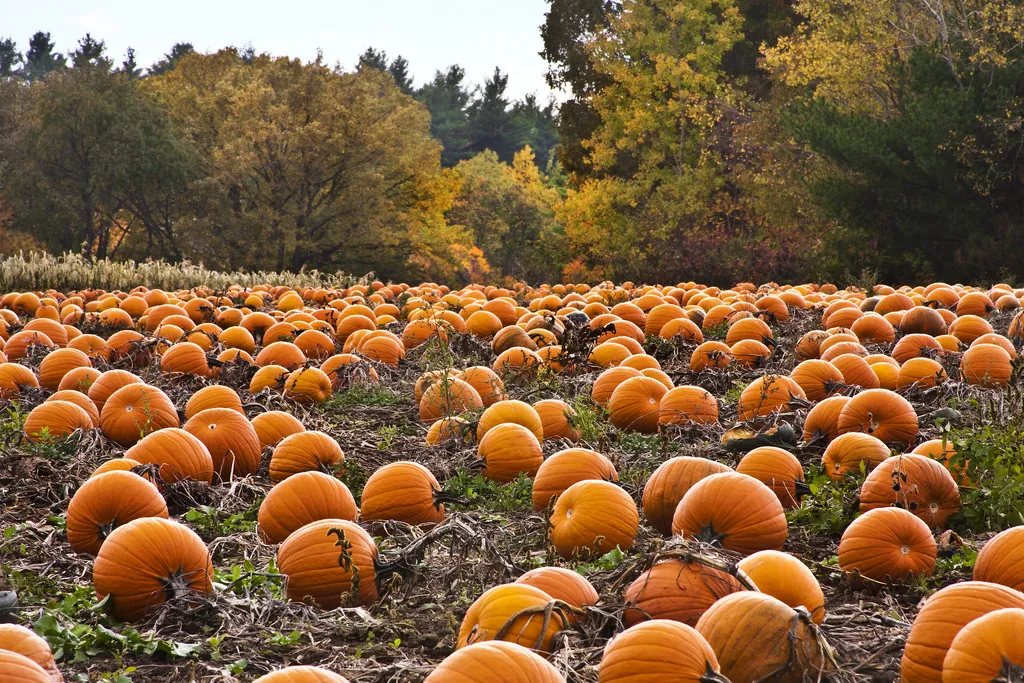
The pumpkin mixture consists of 2 sticks of unsalted butter to a saucepan and is melted over medium-low heat. I use plain puree for the pumpkin puree and I typically use 2 cups. Once my butter is melted I then add the puree with it as well as pumpkin seasoning, cinnamon, nutmeg, and cardamom. It gives you that aroma of the pumpkin spice and your mouth will start watering. Start to whisk it so it won’t separate and then add some water of hot boiling water and whisk thoroughly.
For the dry ingredients, I add flour, sugar, and salt in a large bowl and whisk to combine all the ingredients together. Then my wet ingredients consist of half a cup of buttermilk, two eggs, baking soda, and vanilla extract to eliminate that smell of the eggs. I then take my dry ingredients and my pumpkin mixture and combine them together and then start mixing them together and cover it completely making sure it is completely mixed evenly. Once that is done I then pour in my wet ingredients and do the same. You want to make sure there are no clumps and that it is smooth.
I get a muffin tin and either spray the muffin tin with olive spray or rub butter on the surface or place cupcake holders depending on what I want. Then I pour the mixture half way because you do not want to overfill. You want to bake this at 350 degrees for roughly 15-20 minutes and then check on it at 15 minutes.
When I take it out I let it cool down while I am making the cream cheese filling. Take a stick of unsalted butter and a full package of cream cheese. I added powdered sugar and a little vanilla extract and let it mix together until smooth. Then I will place the cream cheese icing on top of the cupcake and spread it evenly. I like to add some cinnamon sprinkle on top of the cupcake. Then it’s ready to serve. It is very delicious to eat alone or with a cup of coffee.
I hope you will try this with your family on Thanksgiving or any time of the year and enjoy it just as much as I enjoy making it.
Ingredients:
- 2 sticks of unsalted butter
- 2 cups of pumpkin puree
- 2 tablespoons of pumpkin spice
- half a cup of hot water
- 2 cups of flour
- 2 cups of sugar
- ¼ tablespoon of salt
- ½ cup buttermilk
- 2 eggs
- baking soda
- vanilla extract
- 8 ounces of cream cheese
- 1 stick of unsalted butter
- powdered sugar
For more awesome recipes check out the Fill Your Plate recipe section. There are hundreds of recipes to choose from.
100 Things to do with Strawberries
By Bailey Roden, Arizona Farm Bureau Intern
We all know the beautiful red fruit that we call the strawberry. The strawberry is a universal food that’s healthy but we often consider it as a dessert. We’ve seen them covered in chocolate, sugar, and I’m sure many other delicious additions. So, I set a goal for myself, I found 100 unique uses for strawberries.
The most exciting news, for the past four years Duncan Family Farms has been growing organic strawberries for you and me!
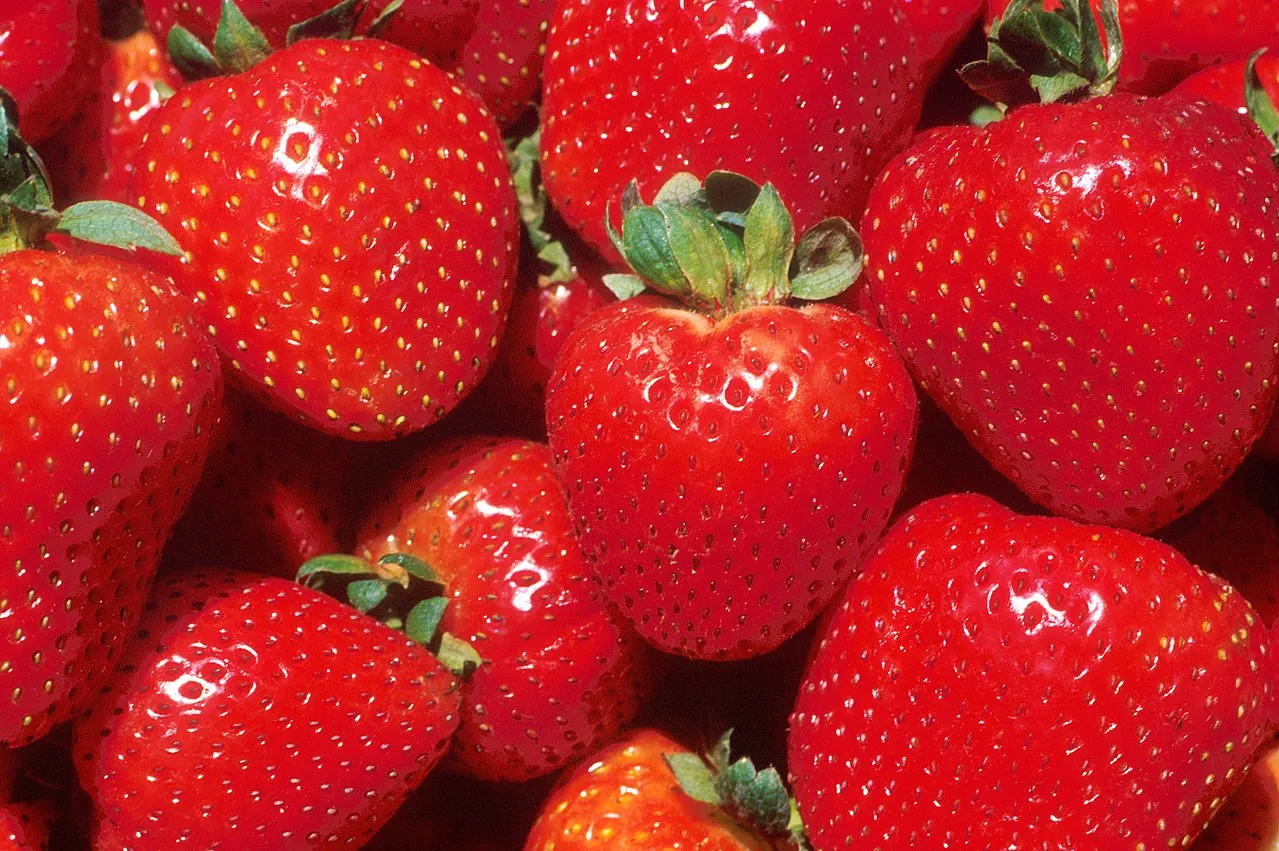
- Frosty Strawberry Square
- Strawberry Nutella Poptarts
- Strawberry Buttermilk Donuts with Strawberry Glaze
- Pork Tenderloin Medallions With Strawberry Sauce Recipe
- Summer Strawberry Soup Recipe
- Seared Salmon With Strawberry Basil Relish Recipe
- Strawberry Orange Creamsicle Jam
- Vanilla Sponge Cake with Strawberry-Meringue Buttercream
- Strawberry Spinach Salad
- Campfire Strawberries
- Strawberry Cheesecake Chimichangas
- Strawberry Daiquiri Italian Ice
- Strawberry Cheesecake Lasagna
- Strawberry Cheesecakeadilla
- Fresh Strawberry Yogurt Cake
- Fresh Strawberry Coffee Cake
- Fresh Strawberry Muffins
- Strawberry Cheesecake Flapjacks
- Grilled-Chicken Tacos with Strawberry Salsa
- Roasted Strawberry Olive Oil Cake
- Chocolate Covered Strawberry Stout Brownies
- S’mores Stuffed Strawberries
- Strawberry Chocolate Chip Cookies
- Fresh Strawberry Bars
- The Best Fresh Strawberry Pie
- Strawberry Sweet Rolls
- Candied Strawberries
- Fresh Strawberry Cobbler
- Strawberry Roll-Ups
- Chocolate Strawberry Oasis Pie
- Strawberry Jalapeño Salsa
- Chocolate-Covered Strawberry Brownies
- Strawberry Rice Krispy Treats
- Strawberry Cream Cheese Danish
- Golden Oreo Strawberry Cheesecake Bars
- Glazed Strawberry Muffins
- Strawberry Butter Spread
- Made from Scratch Strawberries & Cream Cake
- Homemade Strawberry Poptarts
- Strawberry Macarons
- Strawberry Rolls with Cream Cheese Icing
- Cream Cheese Strawberry Stuffed French Toast
- Strawberry and Meyer Lemon Filled Crepes
- Avocado Strawberry Layered Smoothie
- Strawberry Chocolate Chip Skillet Cookie
- Strawberry Cream Puffs
- Strawberry Syrup
- Fresh Strawberry Cupcakes
- Strawberry Buttercream Frosting Recipe
- Strawberry Shortcake Cupcakes
- Creamy Strawberry Pie
- Strawberry Cheesecake Trifle
- Strawberry Marshmallow Brownies
- Strawberry Pecan Pretzel Salad
- French Strawberry Cake
- Strawberry Crisp
- Fresh Strawberry Lemonade
- Strawberry Dumplings
- Strawberry Yogurt Bark
- Strawberry Brownie Cheesecake
- Strawberry Flan Jell-O Cake
- Strawberry Cheesecake Muffins
- Strawberry Banana Oat Muffins
- Caramel Brulee Cheesecake Strawberries
- Mango Peach and Strawberry Smoothie
- Strawberry Shortcake Ooey Gooey Butter Cake
- Rice Krispy Treat No-Bake Strawberry Cheesecake
- Chocolate Covered Strawberry Cupcakes
- Old-Fashioned Donut Strawberry Shortcake
- Strawberry Mousse
- Strawberry Whoopie Pies
- Strawberry Cheesecake With an Oreo Cookie Crust
- Strawberry Cheesecake Chocolate Cookie Cups
- Strawberry Angel Cake
- Strawberry Chocolate Cake
- Best Strawberry Cake Ever
- Strawberry Cream Cheese Stuffed Coffee Cake
- No-Bake Strawberry Shortcake Cheesecake Bars
- Strawberries and Cream Cake
- Strawberry Thumbprint Cake Mix Cookies
- Strawberry Slab Pie
- Strawberry Lemonade Cake Bites
- No Bake Strawberry Cheesecake Pie
- Strawberry Nachos with Cinnamon Chips
- Strawberry Shortcake Kabobs
- Strawberry Shortcake Cake Pops
- Strawberry Shortcake Cookie Cups
- Strawberry Shortcake Cookies
- Strawberry Jell-O Fluff Salad
- Mama Seward’s Strawberry Cake Recipe
- COOL ‘N EASY Strawberry Pie
- Strawberry Jell-O Angel Food Cake
- Strawberry Sorbet
- Strawberry Buttermilk Muffins
- Strawberry Cheesecake Truffles
- Strawberry Strudels
- Strawberry Crepe Cake
- Strawberry Zefir Cake
- Strawberries And Cream Poke Cake
- Strawberry Banana Poke Cake
So there you have it. My goal of finding 100 wonderfully unique things to do with strawberries is complete. However, if you read all 100 of those recipes, but you are looking for something different check out Fill Your Plate’s recipe page for so many amazing recipes with all different kinds of produce.
Acne is Not Just About the Diet
By Bailey Roden, Arizona Farm Bureau Intern
You know that cliché movie where the teenage girl has a date coming up and a pimple appears right in the middle of her forehead. I fully relate to this and I know many of you can too. Of course, it’s not a problem any of us want to have but it happens! I remember my first experience with this problem like it was yesterday. I had the most important competition of my life. I thought that no one would be able to take me seriously with a ginormous swollen red dot on my face. The worst part of it all is that there was nothing I could do about it other than a little foundation. It still felt like a neon sign flashing red on my forehead.

So, I went on about my day, did my competition while still being completely self-conscious. To make matters even worse I was in so much pain due to this bump on my face. I didn’t think the day could get any worse. While I was in this situation I began to think of all the ways this can be prevented. I wash my face every day and I moisturize, but apparently that’s not enough.
Full of curiosity, I began to do some research because I needed to know how to avoid this situation. During my research I found out that teenagers are not the only ones suffering from acne, adults are too. Research has also shown that your diet plays a role in your face breakouts. A lot of Americans consume a “Western Diet.” This diet is loaded with red meat, saturated fats, carbohydrates and too much sugar. A key component missing from this diet is plant-based fibers. The western diet has forgotten the rule of moderation. As the consumer of this diet, it is our responsibility to incorporate moderation. There are foods we could add to this diet to help fight acne! For example, foods that are rich in antioxidants! You can also keep that beef on your plate, because foods that are rich in zinc help fight acne as well. So, next time you throw that mouthwatering steak on the grill, have a nice side salad to go with it! I would even throw some carrots on that plate for a brighter color!
The list includes more than just your diet when it comes to contributing factors of acne. Your genetics and hormones are also the enemy. Genetics may come as a shock to most people but in this day in age it’s pretty common. This is one of the most unpredictable factors. Similar to other diseases or issues dealing with genetics, it’s difficult to treat because the counter reaction is unknown. The other excuse you’ve heard for acne is hormones. Hormones are the sneak-attack acne. Hormones are happening internally and acne is an external blemish that appears due to all the crazed hormone activity that’s going on during puberty. Of course, there is one more pesky acne factor that we are all too familiar with; stress. Stress-related pimples can also be linked back to hormones. When you’re stressed, an oil-releasing hormone increases the amount of oil released therefore causing a clogged pore and a surprise visit from our unpopular friend, acne.
It seems like the world of acne is against us, that’s because it totally is. But we worked out today, so we’re ready to fight back! In the war against acne, remember to have a diet that includes a variety of red meat and plant-based fibers. If genetics is your issue, doctors specializing in dermatology can help you find a treatment that’s right for you, the same thing goes for hormones! As for stress, take a deep breath and relax.
For recipes to help you add variety to your plate check out Fill Your Plate, We have everything from main dishes, side dishes, and desserts!
Decades of Food
By Lauren Scott, Arizona Farm Bureau Intern
Food has changed quite a bit in the last 100 years, as most people realize. The fast-paced world of today is filled with fast food, meals on the go, and not as many sit down dinners as were common 50 years ago. People just don’t have the time.
Many foods and dishes have come and gone in popularity, and some remain solid staples in American cuisine today. Things like spaghetti, mac and cheese, and casseroles can still be found in households across the United States, even if they aren’t being served at a traditional sit-down dinner.
What dish do you remember most from childhood?
Let’s take a look at food trends and popular meals through the decades, and how it all compares with our idea of food today.
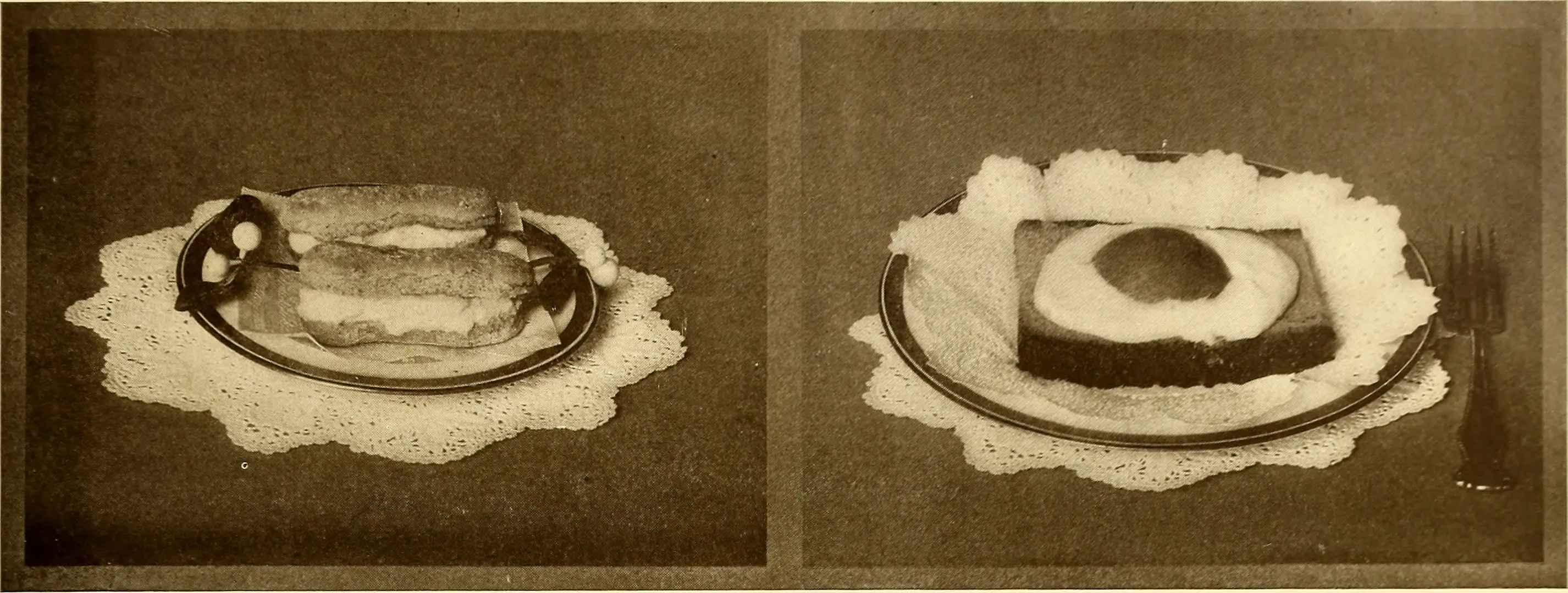
Two holiday desserts. Photo circa 1905.
The 1900s:
The early 1900s was a time long before modern kitchen technology. Meals were prepared from scratch and from things grown or raised on family farms or in gardens. Whatever was readily available was utilized.
Because family farms were abundant, many families were able to grow and raise a wide variety of animals and plants. Meat was a staple in all households, whether it be beef, chicken, or ham. Seafood was popular, as well, and if it was accessible you can bet it was used!
Sweets were almost as abundant as meat in people’s diets circa the early 1900s. Dinner was usually finished off with cake or pie, and of course coffee.
Foods created in the early 1900s: Oreo Cookies, Hellman’s Mayonnaise

Newspaper ad from 1921.
The 1920s:
The ‘roaring 20’s’ was a great time for food. The in-home refrigerator (invented in 1913) was becoming more and more commonplace in homes, meaning foods that spoiled easily could now be utilized in day to day cooking.
Meat was still a large part of family diets and was usually eaten at every meal. Breakfast, lunch, and dinner were not always made from scratch, however, like in the early 1900s. Canned foods were gaining popularity, and they were making cooking easier!
Sugary treats were on the rise too with the invention of many different candies that we still consume today!
Also remember, this decade is when prohibition came around. A society that was used to having a drink every now and then was forced to give it up (unless there was a speakeasy nearby).
Believe it or not, cocktail party popularity peaked during prohibition. People started entertaining their guests with fruit cocktails instead of alcohol-filled cocktails in response to the lack of booze.
Foods created in the 1920s: Yoo-Hoo beverage, Velveeta Cheese, Reese’s Peanut Butter Cups, Kool-Aid, Baby Ruth candy bar, Popsicles
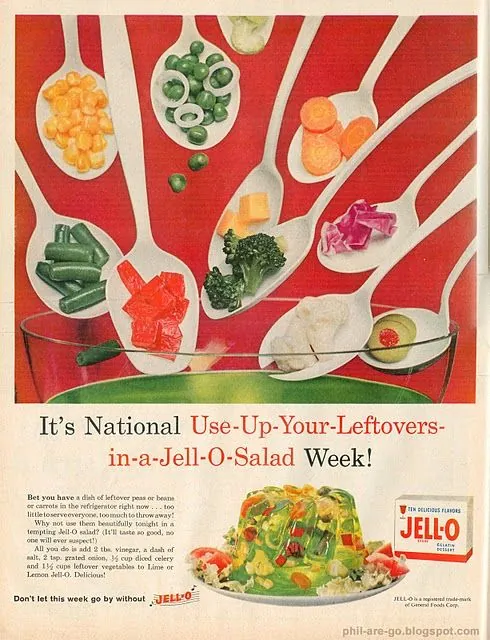
Ingredients for the perfect Jell-O Salad. Circa the mid-1930s.
The 1930s:
Pre-made, canned, and packaged foods started becoming more common in household kitchens in the 1930s.
While meat was still the main ingredient in many dishes, families turned to cheaper cuts due to price changes during the Great Depression. In many cases, the cut of meat didn’t matter because it was going to end up in a dish like goulash, soup, or a casserole.
‘One-pot’ dishes became go-to meals during the time of the Depression because they could feed an entire family with fewer ingredients and less cook time.
For families who had fallen on hard times, soup kitchens and bread lines became the place to get a hot meal, although many people in need refused to stand in line because of shame.
One dish that gained popularity in the 30s and stayed popular through the 70s was the Jell-O salad. A dish that mixed ingredients together much like a casserole, this ‘salad’ was just the kind of dish that a family trying to stretch their dollar would make.
Food created in the 1930s: Snickers candy bar, 3 Musketeers candy bar, Ritz Crackers, Spam

An ad from the mid-1940s.
The 1940s:
This was the decade of food rationing. World War II had people stretching their limited ingredients as far as they would go. Family recipes were re-worked to use what was available or what families had on hand already.
The second world war took many men away from their families and thrust many women into the working world. This meant that meals had to not only be made with little ingredients but had to be pre-made or have a quick cook time.
Yet again, casseroles, Jell-O salads, and one-pot meals that incorporated many different ingredients were the focus of many family dinners.
Because certain food items were being shipped to troops and not to the people at home, the government encouraged people to start growing their own produce in ‘victory gardens’ to provide their families with things they couldn’t get at the supermarket.
When food rationing ended in 1946, sugar was the last thing to be ‘unrationed.’ After this, sweets became as popular as ever!
Food created in the 1940s: M&Ms, corn dogs, Nutella, Jolly Ranchers
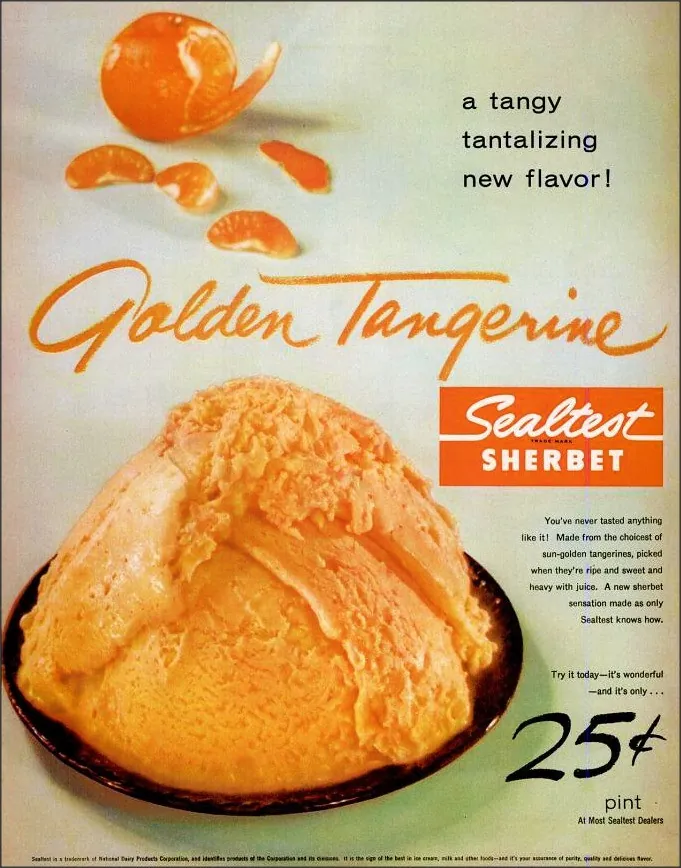
Ad from 1954.
The 1950s:
The 1950s saw the beginning of the fast food empire when giants Burger King and McDonald’s sprung up in 1953 and 1955, respectively.
As immigration stayed at a steady level, foods from across the globe became more mainstream in cities, giving people a taste of the world.
People continued to create delicious home-cooked meals in the 50s, although pre-made and processed foods started creeping into the food scene little by little.
Barbequeing became the best way to entertain guests and people took to their outdoor living spaces when the weather permitted to cook every part of their meal on the grill. Anything from steak, to kebabs, to lamb, to salmon was thrown on the grill and cooked up!
Side dishes to these meals were very similar to what we still eat at BBQs today: baked beans, potato salad, and salad made with fresh greens and produce.
Fun fact: The mid to late 1950s was when frozen ‘TV dinners’ started to become commonplace in households.
Food created in the 1950s: Frozen pizza, ranch dressing, marshmallow Peeps, instant ramen noodles

Ad from 1964.
The 1960s:
You were wrong if you thought we were going to be done with Jell-O dishes in this decade. For some reason, Jell-O continued to dominate at cocktail parties, family dinners, and other neighborhood events.
And no, we still are not talking about the sugary sweet Jell-O kids today know and love.
At this point, Jell-O salads weren’t even being eaten out of necessity, but out of the pure aesthetics of it. Have you seen a Jell-O salad? They look pretty cool, but when you’re told that there is tuna in there, your appetite will definitely be squashed.
The 60s was also a time when Julia Child was revolutionizing food by bringing the art of cooking French cuisine into family kitchens across the US. Child empowered mothers around America to put their skills to the test in the kitchen, bringing about a whole new era of food.
Foods created in the 1960s: Gatorade, Pop Tarts, Doritos, buffalo wings
The 1970s:
Other than some very strange clothing trends, it was very fashionable to eat and cook with fresh fruits and veggies in the 1970s.
The word ‘salad’ continued to describe foods that were not at all salad, still including things encased in Jell-O, and now sweet dishes like the Watergate Salad.
Pineapple was a hit at dinner parties and luncheons throughout the 70s. It was used in main dishes, side dishes, and desserts too! In fact, the Watergate Salad is made with pineapple.
Sauce was used on lots of popular dishes during this time, although some recipes probably could have done without it. Cheese sauce, Hollandaise, and ketchup were all used very liberally on dishes.
French cuisine continued to dominate, and it wasn’t a party unless there was quiche on the appetizer table.
Foods created in the 1970s: Laffy Taffy, Skittles, Big Red Gum, Banjo Bars
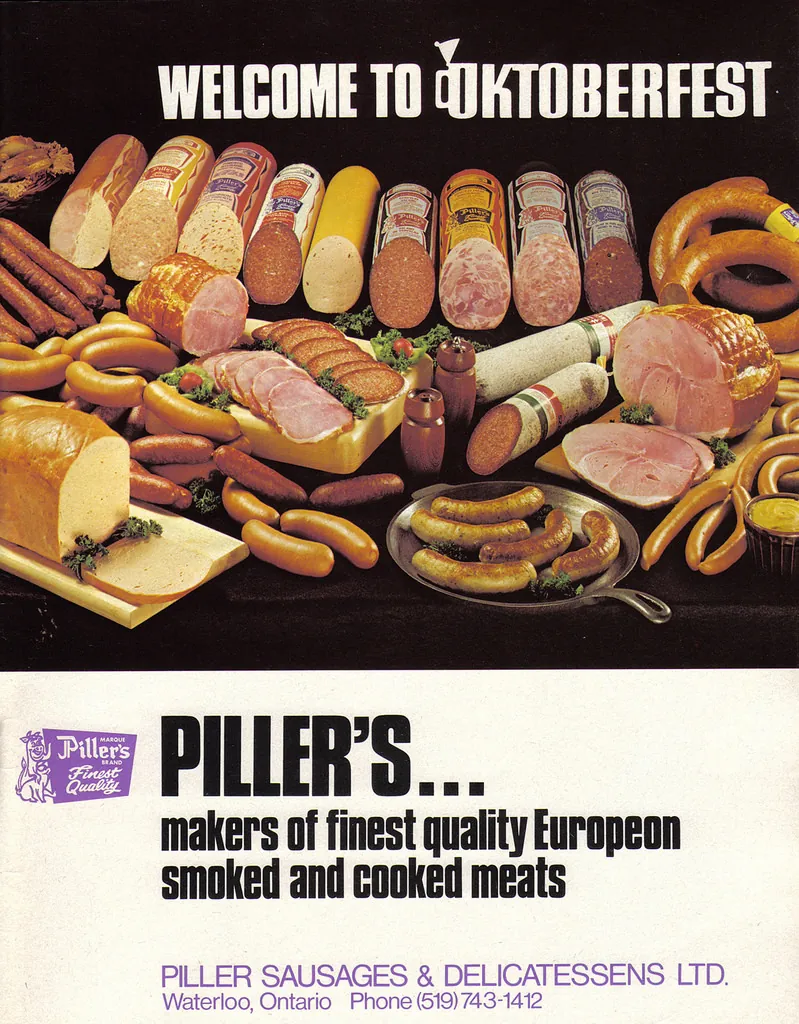
Ad from 1980.
The 1980s:
Say hello to processed food!
This was the decade when Cool Ranch Doritos became a thing, artificially flavored fruit snacks were all the rage, and Tab Cola was what the cool kids were drinking.
Kids had to be home when the streetlights came on, and when they walked in the door mom had dinner on the table and ready to go. All day long the house smelled delicious because mom had been using her slow cooker to prepare that evening’s meal.
If it wasn’t from the slow cooker, it was easy-to-make sloppy joes!
Making food quicker to cook was uniquely 80s if you couldn’t tell.
With Rice-A-Roni and pizza kits, who wouldn’t want to help cook dinner in the 1980s!
Entertaining party guests was still a big deal in the 80s, and Seven-Layer-Dip was always a big hit at gatherings.
Foods created in the 1980s: Chicken nuggets, Nerds, Diet Coke, Hot Pockets
The 1990s:
Pre-packaged meals and heat-up snacks became bigger than ever in the 90s. (I can attest to this as a 90s kid!)
It wasn’t unheard of for both parents to be working well into the evening by this decade, which meant foods needed to be more accessible to kids and babysitters.
Lunchables were a staple in lunchboxes of most school kids and Pizza Bagels were the go-to after-school snack, for me at least!
Adults were packing healthy salads as their lunches, with the top choice being a Caesar salad.
Looking for a good 90s diet? All the ladies were trying Slimfast to drop that unwanted weight.
Kids and young people, however, were munching away on their Dunkaroos.
Foods created in the 1990s: French Toast Crunch, Surge soft drink, Baby Bottle Pops, Caramel Apple Pops
What foods were your favorites during childhood? What was the craziest thing you ever ate? What food did you hate the most? Let us know and then visit our recipe section at Fill Your Plate to find some recipes you’ll love!
The Japanese Pumpkin
By Kat Brown, Recent Arizona State University Nutrition Student
With fall creeping up around the corner, and hopefully double digit temperatures, it’s about to be the season of the pumpkin! Watch out because a new squash is in town. It is called kabocha and is often referred to as the Japanese pumpkin. This versatile veggie normally has a dark green skin but some varieties can also have an orange pumpkin-like skin and are a perfect medium size, usually ranging from 3 to 5 pounds. Slicing into this Asian squash you will see an orangey yellow color that makes for that perfect fall color palette when cooking.

Since they are normally available late summer to fall, if you plan on stocking up make sure that you store them in a cool dry spot. Over time the kabocha will sweeten and can be used to make wonderful holiday desserts. Kabocha is packed with benefits from the skin to the seeds. The squash itself is cfull of beta-carotene and iron, while the skin is loaded with fiber.
Beta-carotene
This antioxidant converts to vitamin A in the body and helps support a healthy immune system and good vision. Since vitamin A is a fat soluble vitamin it is important to monitor intake and not exceed the UL of 3,000 ug/day. When consuming b-carotene, the body only converts what it needs to vitamin A, making it a safe source of vitamin A to consume. B-carotene is also what provides the red-orange pigment in plants and fruits.
Iron
The recommended dietary allowance (RDA) for iron is 8mg/day for men and 18mg/day for women ages 19-50 years old. This mineral is used to make hemoglobin that allows your red blood cells to carry oxygen throughout the body. Iron deficiency can result in anemia and while it is not common in the United States when present it can have serious health consequences.
Fiber
Fiber is a crucial part of a healthy diet and consists of insoluble and soluble fiber. The skin of most winter squash consists mostly of insoluble fiber which means it does not dissolve in water. Studies show that people with higher fiber intakes have a reduced risk of heart disease, colon cancer, and gastrointestinal disorders. This is partially due to insoluble fibers ability to bind and remove carcinogens from the intestines.
Just like pumpkins, you can roast your kabocha seeds. The seeds provide omega 3 fatty acids which can provide many health benefits.
Here is my favorite seed recipe:
Ingredients:
3 cups kabocha squash seeds, cleaned and dried
1 Tbsp coconut oil
2 Tbsp sugar
1 tsp cinnamon
1 tsp chili powder
1 tsp sea salt
Method:
Preheat oven to 180
Toss seeds with oil.
Combine sugar (if using) and spices and toss with seeds, coating evenly.
On parchment-lined cookie sheets, place seeds in a single layer.
Roast 20-30 minutes, stirring occasionally and checking for doneness.
The good news: kabocha does great in drier climates! Many types of squash are available year round in Arizona, so no matter what, you can always find delicious and local squash near you! Visit Fill Your Plate to do just that, and find local growers of squash and other fruits and veggies!
Cooking With Cast Iron
By Nathan Chambers, Recent Arizona State University Nutrition Student
I think my first experience with an electric stovetop and aluminum pan was when I moved out of my parent’s house and got my first apartment. I’d been cooking on gas and with cast iron from the age of 11. Like a lot of things, I never really appreciated the difference until I got stuck with the crummier option.
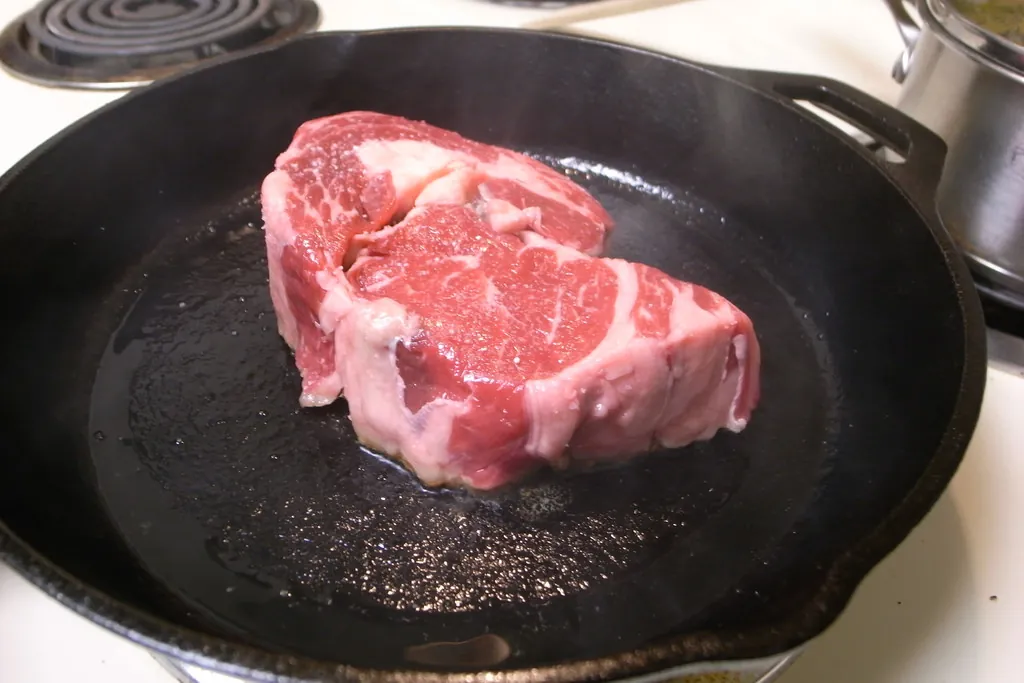
I more or less learned to cook when I was in Boy Scouts, on a propane-fueled stove, and with a nice heavy cast iron skillet. From pancakes and eggs to baked desserts or grilled cheese, I always cooked in cast iron.
Cast iron is easy to care for (don’t let it scare you) and a pleasure to cook with. Because of its ability to retain high, even temperatures you can be sure that any steak you’re searing or chicken your deep frying will turn out perfectly!
Benefits of cast iron:
- Easy cleanup (once you know what you’re doing)
- Retains high heat
- Balance of heat
- Utility: sear, bake, brown, fry… cast iron can be used for just about anything!
There are a few things to keep in mind when cooking with cast iron, however. Even though the care of your cookware really is simple, it is very important to make sure you don’t skimp on the process. Care for your cookware and it will care for you!
Things to remember:
- Clean and re-coat after each use
- Scrub with coarse salt between uses– cast iron can retain the flavor of the last thing you cooked
- Acidic ingredients can damage your pan if you are not properly caring for it
Start your journey with cast iron by first seasoning the skillet. Here’s how:
- Preheat your over to 325 degrees Fahrenheit
- Wash the skillet with warm, soapy water and a sponge. (Only was the skillet before you are going to season it.)
- Rinse and dry the skillet
- Using a cloth, apply a thin layer of vegetable oil to the inside AND outside of the cast iron skillet
- Put the skillet upside down on the heated ovens center rack
- Put a sheet of aluminum foil onto the bottom rack, below the skillet to catch oil drips
- Bake the skillet for an hour
- After an hour, turn the oven off and let the skillet cool inside the oven.
Your cast iron skillet is now seasoned and ready for cooking! Good luck!

